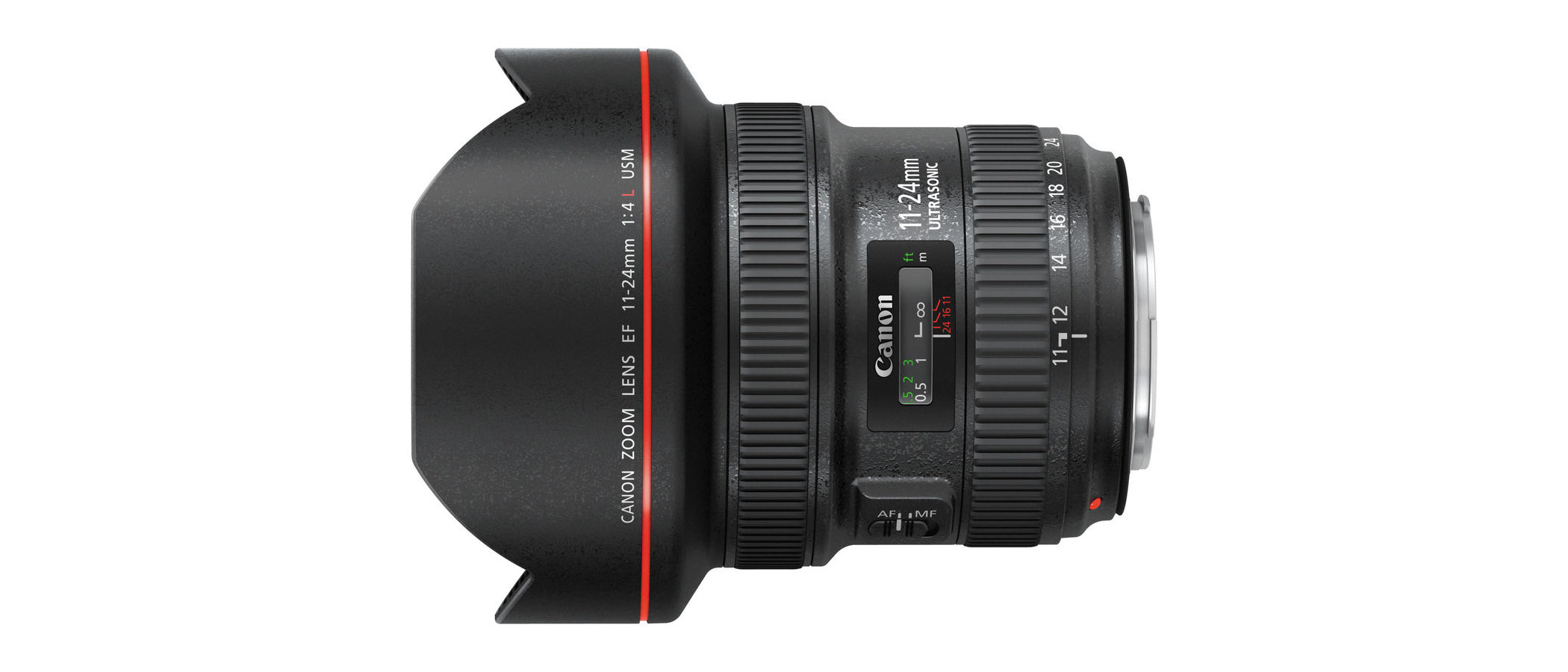Digital Camera World Verdict
For a rectilinear rather than fisheye lens, this full-frame compatible zoom takes viewing angles to the extreme. The price tag is similarly large but Canon’s EF 11-24mm is something of an engineering feat and has impeccable build quality, along with excellent all-round performance. At the end of the day though, the competing Sigma 12-24mm f/4L DG HSM almost matches the Canon for viewing width, delivers superb image quality and only costs about half as much to buy, making the Canon look relatively poor value.
Pros
- +
Mighty maximum viewing angle
- +
Excellent build quality
- +
Impressive image quality
Cons
- -
Expensive to buy
- -
No image stabilization
- -
Color fringing and distortion
Why you can trust Digital Camera World
The Canon EF 11-24mm f/4L USM launched as the world’s widest-angle rectilinear zoom lens, overtaking the Sigma 12-24mm f/4 DG HSM | A by a single millimeter in its shortest focal length. The 11mm focal length delivers a monstrous 126-degree viewing angle, measured on the horizontal of the image frame. It’s only marginally bigger and heavier than Sigma’s 12-24mm ‘Art’ lens, which almost matches the Canon with a maximum viewing angle of 122 degrees.
Specifications
Mount: Canon EF (full-frame)
Autofocus: Yes
Image stabilization: No
Lens construction: 16 elements in 11 groups
Angle of view: 126-84 degrees
Diaphragm blades: 9
Minimum aperture: f/22
Minimum focusing distance: 0.28m
Maximum magnification ratio: 0.16x
Filter size: N/A
Dimensions: 108x132mm
Weight: 1,180g
Key features
As you’d expect at the price, this L-series lens has impeccable, fully professional-grade build quality. The optical path includes one UD (Ultra-low Dispersion) and one Super UD element, plus four aspherical elements. Three different types of coatings are employed to minimize ghosting and flare, including Canon’s high-tech ASC (Air Sphere Coating) and SWC (SubWavelength Coating). As with most recent Canon L-series lenses, this one features multiple weather-seals, as well as fluorine coatings on the front and rear elements.
As usual in ultra-wide-angle lenses, the hood is integral, which gives physical protection to the extremely bulbous, protruding front element. There’s a gelatin filter holder in the mounting plate at the rear but, if you want to use regular filters, you’ll need a specialist system like the Lee Filters SW150 Mark II.
Performance
The autofocus system is very quick and quiet, based on an ultrasonic ring-type drive with a high-speed processor and optimized algorithms. There’s no image stabilization but that’s generally not too much of an issue at the short end of the zoom range, where you can typically get away with shutter speeds as slow as 1/10th of a second in handheld shooting.
Centre-sharpness is very good at all focal lengths but the Canon loses out slightly to the Sigma 12-24mm for corner-sharpness at the short end of the zoom range. Control over distortions and color fringing is pretty good but, again, the Sigma has the edge in minimizing these aberrations.
Lab results
We run a range of lab tests under controlled conditions, using the Imatest Master testing suite. Photos of test charts are taken across the range of apertures and zooms (where available), then analyzed for sharpness, distortion and chromatic aberrations.
We use Imatest SFR (spatial frequency response) charts and analysis software to plot lens resolution at the center of the image frame, corners and mid-point distances, across the range of aperture settings and, with zoom lenses, at four different focal lengths. The tests also measure distortion and color fringing (chromatic aberration).
Sharpness:
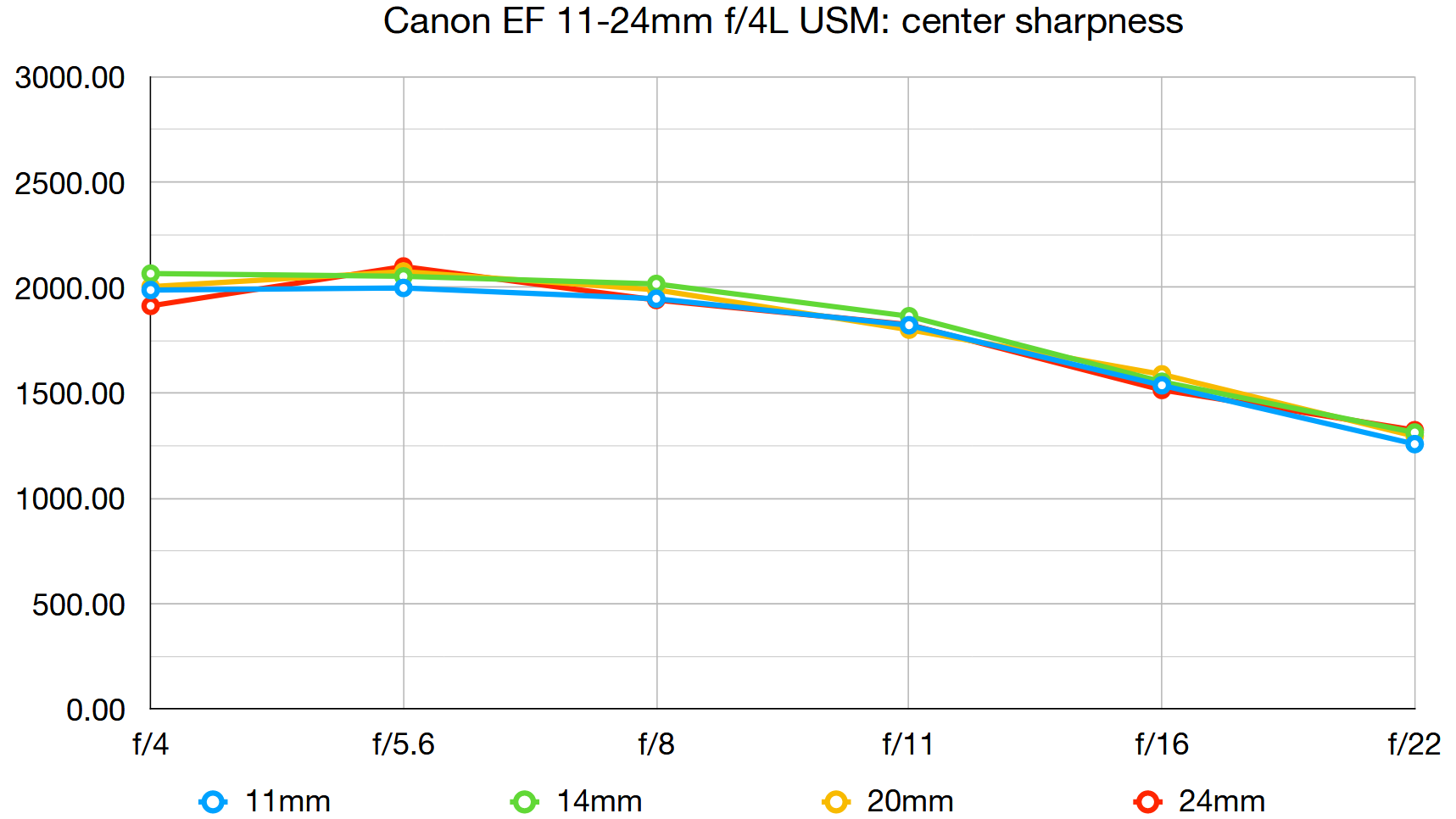
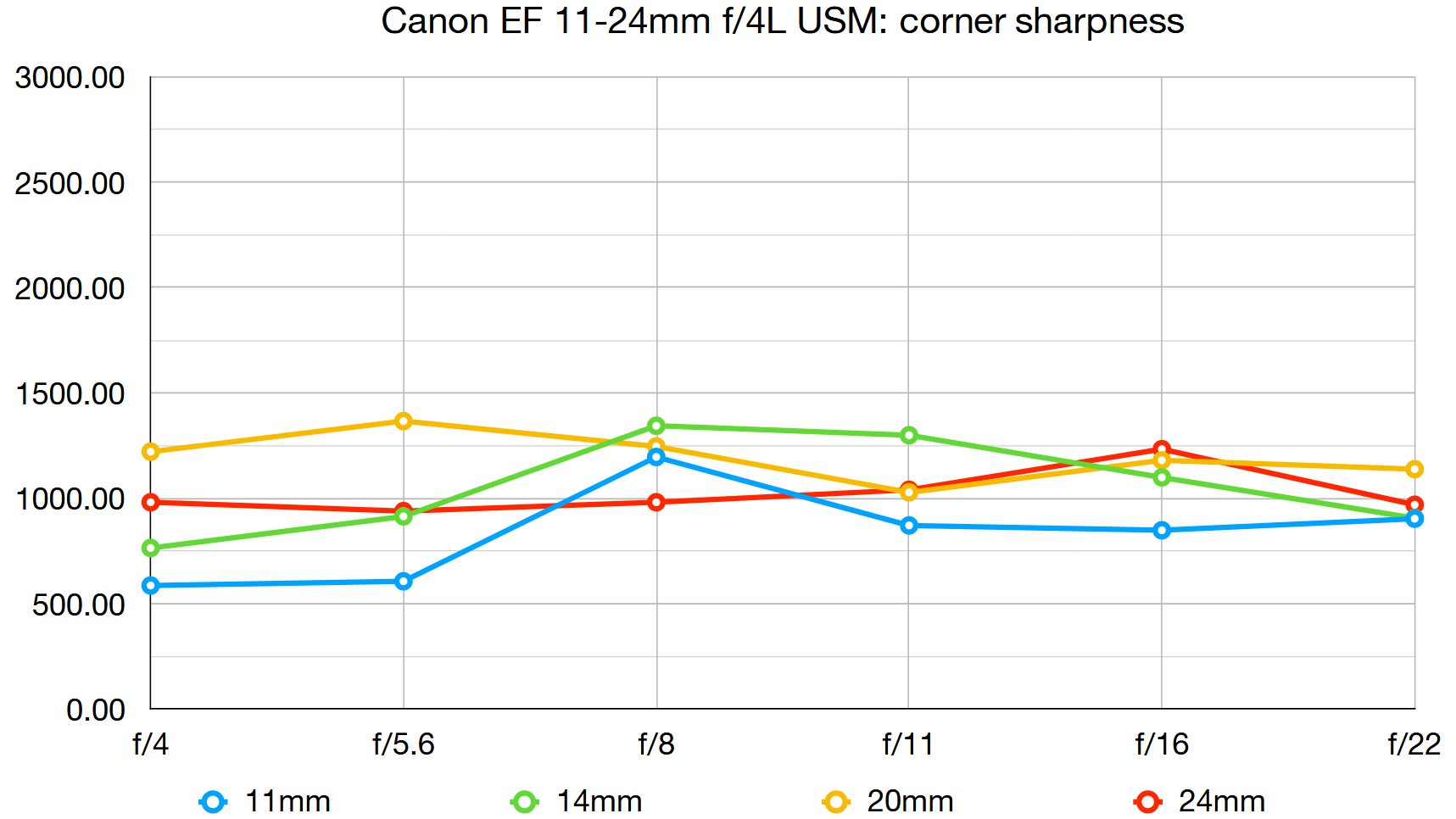
Centre-sharpness is excellent even when shooting wide-open at f/4, throughout the entire zoom range. At 11mm, however, you really need to stop down to f/8 if you want impressive sharpness out to the edges and corners of the frame.
Fringing:
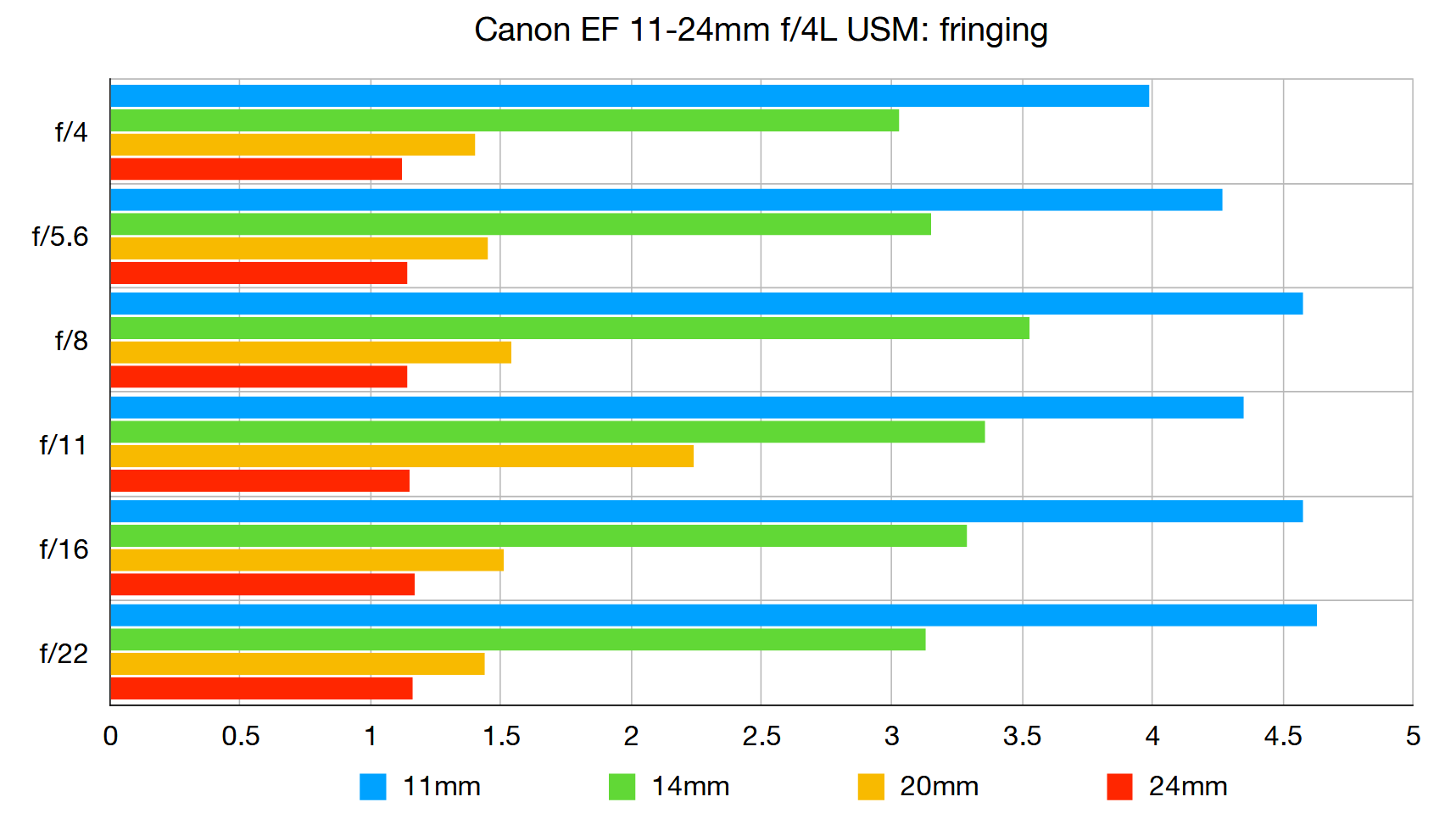
There’s fairly minimal color fringing in the mid to long sector of the zoom range but it can be rather noticeable towards the edges and corners of the frame at the short end.
Distortion:
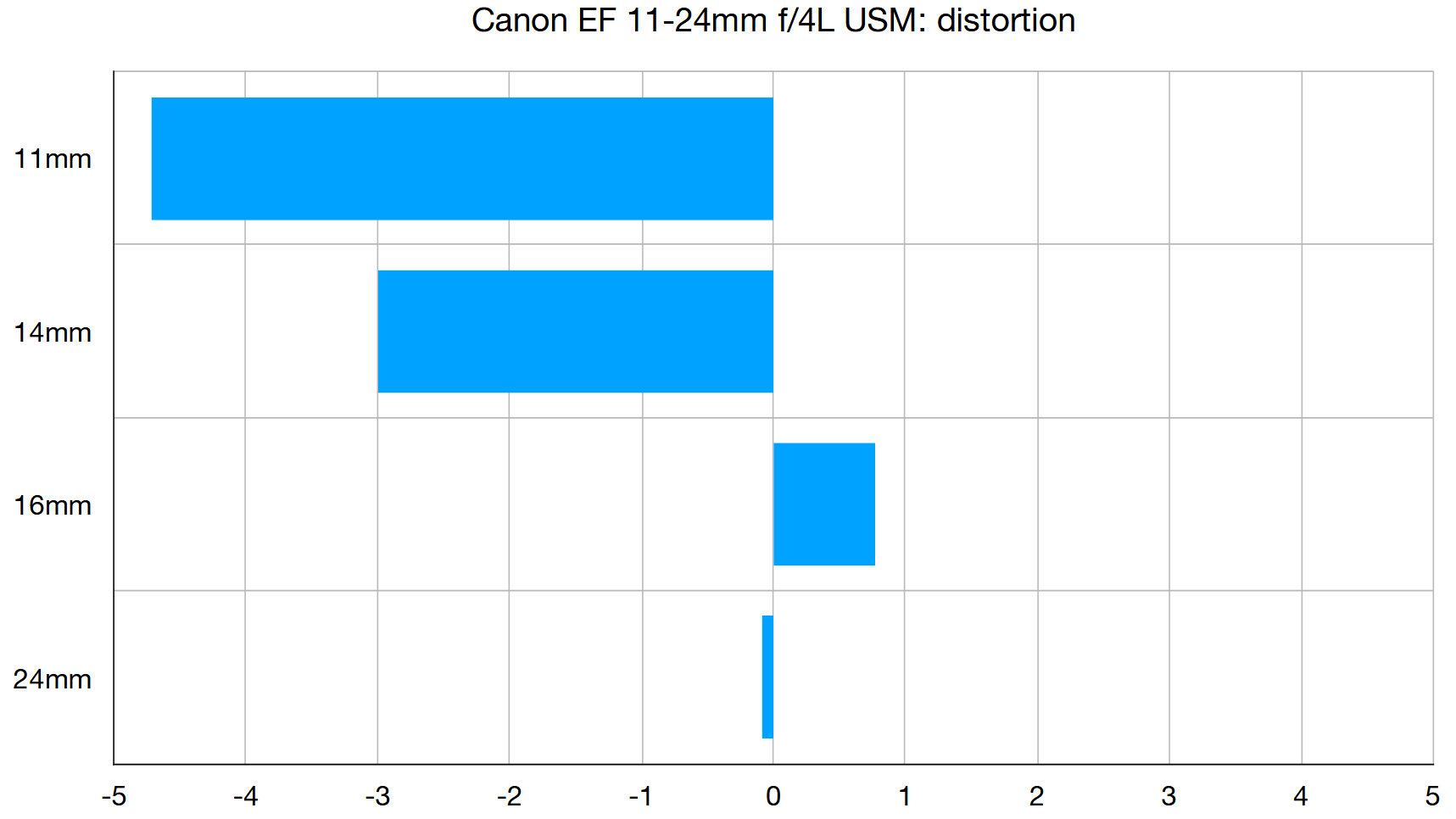
Barrel distortion can be very noticeable at the shortest focal length but it’s fairly negligible from medium to long zoom settings.
Verdict
It’s a very pricey zoom but if you want a really extreme viewing angle from a ‘genuine’ own-brand Canon lens, it fits the bill. If you’re happy to mix and match brands, the Sigma 12-24mm Art lens is a better buy at around half the price.
Read more:
Matthew Richards is a photographer and journalist who has spent years using and reviewing all manner of photo gear. He is Digital Camera World's principal lens reviewer – and has tested more primes and zooms than most people have had hot dinners!
His expertise with equipment doesn’t end there, though. He is also an encyclopedia when it comes to all manner of cameras, camera holsters and bags, flashguns, tripods and heads, printers, papers and inks, and just about anything imaging-related.
In an earlier life he was a broadcast engineer at the BBC, as well as a former editor of PC Guide.
